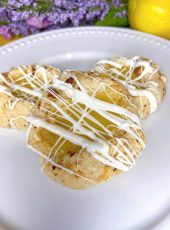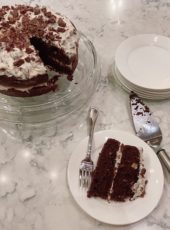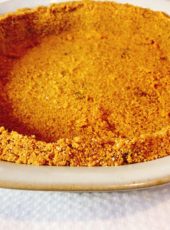Wasabi as most Americans know it may only be powdered horseradish, but it gives the perfect kick to this ranch-inspired salad dressing.
“Something as awesome as wasabi can’t be constrained by tradition.” – Linda Lombardi, writing for Tofugu
Americans know wasabi as the green paste that comes as a free condiment with sushi.
According to Rumi Sakamoto and Matthew Allen in their Japan Forum article, “There’s Something Fishy about That Sushi,” the “global sushi boom” began in the United States in the 1960’s and 1970’s, with each decade seeing an expansion of Japanese restaurants around the world. This led to Japan taking measures in 2006 to certify the authenticity of Japanese cuisine served outside of Japan and Western media responding that the “sushi police” were unfairly gatekeeping. Popular writings in Japan tend to embrace sushi’s popularity overseas as a matter of national pride; Japan as a nation-state has an interest in promoting the perception of authenticity to promote sales of Japanese products. A strange hybridization has occurred with sushi on the matter of authenticity: popular items like “California Rolls” and “Spider Rolls” are obviously American and are now “reverse-imported” to Japan as “genuine American sushi”!
Alongside our changes to sushi, we’ve adapted our own uses of wasabi too. In Japan, wasabi isn’t mixed with soy sauce; it’s placed on top of fish, or other dishes. In general, it’s used as more of a pallet cleanser than a condiment. According to Vice, it’s often served at the end of a meal, on a dish called “Chazuke,” a dish of leftover rice, or just on top of tofu.
If you love wasabi, you may be surprised to find out that you’ve been duped by a nasal-clearing swap. Real wasabi, a grated root from the Japanese plant “wasabia japonica” is rare, in higher demand than the supply could meet, and pretty expensive. The Washington Post posits that if restaurants were to offer the real stuff, even in the small quantities we’re accustomed to, it could add $3 to $5 to your bill. This is why, they report, 99% of the wasabi sold in the United States is a fake. Don’t feel too bad – about 95% of wasabi sold in Japan is too. According to Vice, reporting in 2020, hon wasabi, meaning “authentic” or “native” can fetch €250 for 1 kilo (or ~$260 for about 2.2 pounds). The BBC calls real wasabi the hardest plant to grow in the world; it can take up to three years to mature (with a lot that can potentially go wrong on the way) and its seeds cost about a dollar a piece.
Instead, what we’re accustomed to is ground horseradish and mustard powder, with green food coloring. Those who have had real wasabi say our version is a far cry from the real deal, but most of us have never had the original to be disappointed by the comparison. What our version has in common is the clear-your-sinuses feeling you get from tasting it, or smelling it, or being near it.
It’s those decongestant properties that led to real wasabi’s first uses. Giorgia Cannarella, writing for Vice, offers that before it was used as an ingredient in food it was used as a pre-refrigeration preservative and as an antiseptic in medicine. Actually, according to Mashed, the first mention of wasabi was in Honzo Wamyo, an 18-volume medical dictionary from 918 AD. Lindsay Mattison goes on to explain that this use transitioned into food during the Edo period in 1800’s Japan because the “potent aroma reduced the fishy smell of food.” It’s link with sushi was clear because it was thought to kill bacteria from growing. Today there are still believed to be health benefits of wasabi, from lowering inflammation to improving heart health.
Today there’s even more uses for wasabi (real or fake), as it has expanded into “all kinds of imaginative innovations.” As Linda Lombardi, writing for Tofugu, shares, you can even find wasabi in ice cream or Kit Kat candy bars. After ordering a wasabi ranch dressing as a dipping sauce for French fries, I decided to play around with the idea of creamy wasabi dill dressing with more Asian-inspired flavors with the use of soy sauce and rice wine vinegar. This paired well with the pictured version of a cobb salad: mixed greens, cucumbers, tomatoes, red onion, boiled egg, bacon, feta cheese crumbles, and a chicken cutlet.
Creamy Wasabi Dill Dressing
Recipe by MauraCourse: Sauce, SaladsDifficulty: Easy8
servings15
minutesIngredients
1/2 cup mayo [see note]
1/2 cup sour cream
2 TBSP rice wine vinegar
2 TBSP honey (or hot honey if you're extra spicy)
2 TBSP fresh dill [see note]
2 tsp wasabi paste [see note]
2 tsp soy sauce
Directions
- Mix all ingredients vigorously by hand or in a blender. For best results, store in the refrigerator for a couple of hours before use so flavors can blend.
Notes
- You can use low-fat mayo and low-fat sour cream in place of full-fat; no-fat is not recommended.
- If you're using wasabi powder, mix 4 tsp powder and 4 tsp water for 2 tsp wasabi paste.
- You can substitute dried dill for fresh; use 1 tsp to replace 1 TBSP (this recipe would call for 2 tsp dried dill.)





